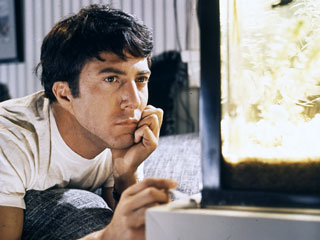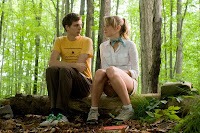 The beginning of “An Education” might throw you off a bit. For a premise that sounds so trite, the music is so upbeat and unexpected. It’s basically an indicator for what’s to come: a surprising, refreshing, and extremely entertaining British drama.
The beginning of “An Education” might throw you off a bit. For a premise that sounds so trite, the music is so upbeat and unexpected. It’s basically an indicator for what’s to come: a surprising, refreshing, and extremely entertaining British drama.
Monthly Archives: January 2010
What J.D. Salinger Meant to Me
 I meant to write this post on Thursday or Friday. Hopefully, this topic hasn’t lost its relevance yet.
I meant to write this post on Thursday or Friday. Hopefully, this topic hasn’t lost its relevance yet.


Movie Review: In the Loop
 Some things are too ridiculous to be true. Other things, when put into the right context, are too ridiculous to not be true. This is the very case for “In the Loop.” Its a very relevant political satire about ridiculous characters and situations during a very ridiculous period in history.
Some things are too ridiculous to be true. Other things, when put into the right context, are too ridiculous to not be true. This is the very case for “In the Loop.” Its a very relevant political satire about ridiculous characters and situations during a very ridiculous period in history.
The Hurt Locker: A New Frontrunner?
Movie Review: Crazy Heart
 There are some movie characters I really wish were real. Bad Blake is one of them.
There are some movie characters I really wish were real. Bad Blake is one of them.
I also must commend Cooper for creating such engaging characters. Beyond Bad Blake, all of his friends, acquaintances, and lovers are equally compelling to watch.
But of course now is the reason you’ll likely see this movie: Jeff Bridges. Yes, it is one hell of a performance. Bridges takes a whiskey chugging burn out and turns him into someone you’ll actually like. Mainly, he makes the character seem so realistic through the smallest mannerisms. Most hilariously, he always opens his belt before he drives. Small details like this might seem insignificant, but they ultimately bring humanity to the character. In this case, a loosened belt shows Bad’s carefree attitude towards life.
At times, Cooper’s film feels sort of like a New Age Western, as Bad travels across the west staying in motel to motel doing what he can to make money. Not to mention, Bad perfectly embodies the reckless outlaw spirit.
“Crazy Heart” also contains what is likely the best original score of the year. The songs by T Bone Burnett bring extra layers of meaning to the film. The last song we see Bad write, a song that shares its name with the movie’s title, shows Bad’s true nature: no matter how much he changes, he’ll always be that same outlaw. He might go back to his old name, but he’ll still always be Bad Blake. And we wouldn’t have it any other way.
Movie Review: Big Fan
 Here’s a little gem that escaped audiences. “Big Fan” is a film that came and went without much buzz, but it’s a film deserving of praise.
Here’s a little gem that escaped audiences. “Big Fan” is a film that came and went without much buzz, but it’s a film deserving of praise.
Golden Globes: A Night for Blue Aliens. And Mike Tyson
 Well, mainstream comedy certainly has something to celebrate.
Well, mainstream comedy certainly has something to celebrate.
Movie Review: The Book of Eli
 There are few films I’ve seen that are bad enough to remind me why I need to review them. Then I saw “The Book of Eli” and remembered this: I need to let you know when Hollywood is trying to make you pay for an inferior product of something you’ve already seen ten thousand times.
There are few films I’ve seen that are bad enough to remind me why I need to review them. Then I saw “The Book of Eli” and remembered this: I need to let you know when Hollywood is trying to make you pay for an inferior product of something you’ve already seen ten thousand times.
Movie Review: Youth in Revolt
.jpg) January is that time of year when the only movies people are going to see are December holdovers and Oscar contenders. So studios dump bad movie upon bad movie on us. It seems more like at this time of year, they release movies with so much potential, yet don’t even try. A perfect example of this is “Youth in Revolt.”
January is that time of year when the only movies people are going to see are December holdovers and Oscar contenders. So studios dump bad movie upon bad movie on us. It seems more like at this time of year, they release movies with so much potential, yet don’t even try. A perfect example of this is “Youth in Revolt.”
Movie Review: Synecdoche, New York
 Some movies just seem too weird to explain. One might look at “Synecdoche, New York” and see a catastrophe: a giant, aimless muddle of a motion picture. But look closer and you’ll see something that’s giant, aimless, and nothing short of masterful.
Some movies just seem too weird to explain. One might look at “Synecdoche, New York” and see a catastrophe: a giant, aimless muddle of a motion picture. But look closer and you’ll see something that’s giant, aimless, and nothing short of masterful.

